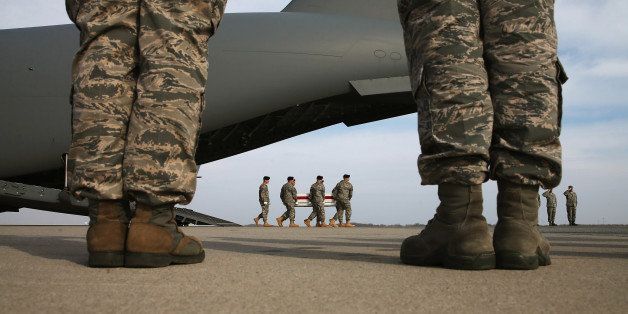
About a year ago, I hit the road for a couple of months. I went to Albany and Albuquerque, Berkeley and Boston, Chapel Hill and Chicago, Seattle and Schenectady. I wasn't reporting. I wasn't writing. I sure wasn't vacationing. No, I was out on a book tour in support of the paperback edition of my book Kill Anything That Moves: The Real American War in Vietnam. I went to colleges and universities, bookstores and radio stations, churches, a writer's institute, and even a senior center. I spoke in classrooms and hotel conference centers, auditoriums and theaters, before students and retirees, to veterans and life-long civilians.
After offering a brief overview of my decade-plus journey into the subject of American war crimes in Vietnam, I would open the floor to questions, and that generally lasted as long as the powers that be allowed. Once, it went on for almost two hours. People would ask about my discovery of long-secret U.S. investigations into atrocities in Vietnam, or what it was like tracking down survivors there, or what Vietnamese thought of Americans all these years later, or how American boys could do such horrendous things. I'd often answer that last one by talking about command policies -- free-fire zones, lax rules of engagement, the body count -- that made it inevitable that large numbers of innocent Vietnamese would be killed.
But that's not what people really wanted to know. They wanted to know what I learned looking into the eyes of mass murderers, what insights I gleaned by talking to torturers. They wanted to know what makes a man kill a defenseless woman he's never laid eyes on before. Or gun down a child. Or mow down the elderly in a hail of gunfire. How could seemingly ordinary American men commit such extraordinarily horrific acts?
There is, in fact, no easy answer to any of those questions. The best I could do was offer a few insights about an environment that made such acts possible. Sometimes, I mentioned the racism that suffused the military from a soldier's first days of basic training through his 12 months in Vietnam. Sometimes, I might have talked about the bloodthirsty ethos -- the chants of "kill, kill, kill" -- in which they were immersed during boot camp. In the end, I would often offer a caveat: that those troops were often little more than boys, that they were naïve and politically unsophisticated, that they were thrown into a dangerous environment in which they expected bullets to start flying at any moment, that they were sent out to act as bait for enemy forces. Then someone would almost invariably ask: Haven't things changed since the Vietnam era? It's not the same for today's troops, right? And I'd stand there and try to figure out how, exactly, to answer that one.
All of this came back to me as I read "Letter to a Young Army Ranger (From an Old One)," the latest piece by Rory Fanning, author of Worth Fighting For: An Army Ranger's Journey Out of the Military and Across America. It's a missive from a Ranger of the first post-9/11 war to a Ranger from the next one, a deeply personal note in which he mentions the racism that suffused his training, the bloodthirsty ethos in which he was immersed, his youth and naïveté. You get the picture.
Today's prospective Ranger, Fanning notes, was heading to kindergarten when he marched out on his first patrol in Afghanistan. Think about that for a minute. And then consider that, despite drawdowns and pledges to end wars, despite rhetoric about today's U.S. military being the greatest fighting force in history, despite trillions of dollars, endless high-tech tools, and fighting some of the feeblest, least popular, under-armed, rag-tag militants imaginable, the results have been dismal. There appears to be no end in sight for an Afghan War raging since the 1970s, interventions in Libya that started in the 1980s, Iraq wars flaring up since the 1990s, a simmering conflict in Somalia that began that same decade, a quasi-war in Yemen kicked off in 2002 and in Pakistan shortly thereafter, and a more recent military effort in Syria. Invasions and interventions and drone campaigns and black ops missions sold as ridding the planet of terrorists, of ushering in freedom and democracy, of transforming the world for the better, have consistently done the opposite. It's all-important information to pass on to a generation of teens, especially the would-be Rangers among them, who have never known an America that wasn't engaged in endless war.
